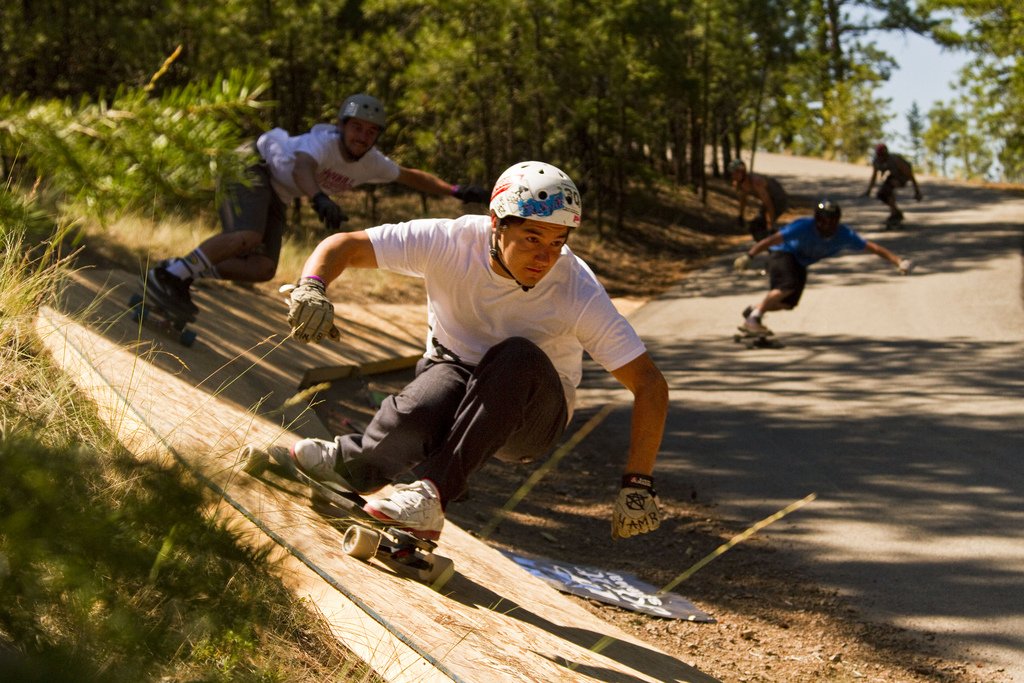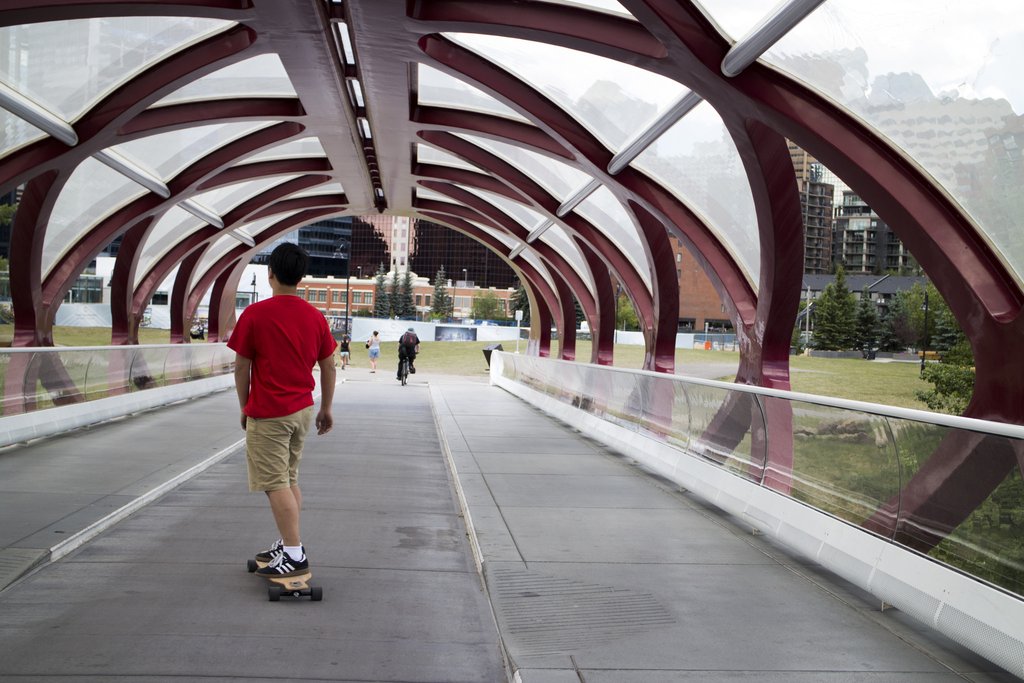A community is not without events, and events don’t host themselves! Events far and wide, no matter whether they’re free or paid, large or small, are really the driving forces behind the communities that they take place in. Without events, any community would eventually dissolve and it would go from being a gathering of people to becoming a spread out population of people that more or less doesn’t care about each other.
Events bring people together. It not only lets people come together and compete, build rivalries and friendships, but it’s also an amazing reminder to how friendly the atmosphere is and the level of welcoming and inclusiveness you can find in most skate communities around the globe. For instance, there are many incredibly advanced events in the scene, like Maryhill or Giants Head Freeride, which a large majority of people cannot skate because they are simply above their level. However, attendance from these skaters is huge because many people come to just hang out! And that’s why events are so important.
That being said, there are times when there may be a lack of events, or a lack of events that you personally don’t enjoy. I know that for a while in my scene, we didn’t have any parkade events, and that really turned me off. There were so many races at the same hills and paths all the time, but nobody seemed to want a parkade race. Or, in the winter, people may not be hosting events at all because of the weather, when people in reality are hungering for an event all the time. These are the cases when you as a skater and valuable part of your local community, must take it upon yourself to make these events happen. And this is written in the hope that it can help those people in the community step up and make events happen, because it’s incredibly easy when it comes down to it; however, it can be condensed down to several steps. I personally took these steps when I was hosting my first event, and it went splendidly.

Step One: Come up with a novel idea.
The first thing you have to do is come up with something that is relatively unique. By this, I don’t mean host an event that is radically different from every event that has ever happened in the world, I mean that you should come up with an idea that isn’t monotonous when put against most events that have happened in your scene in the last few months. For example, if there were 2 parkade races in the past 3 months, don’t host another parkade race; nobody will come, since people will get bored and tired of those races. Instead, if there were 2 parkade races, then host a path race, or even host something like a skate community barbeque! Whatever floats the boat or rolls your skateboard, just don’t make it boring.
There are exceptions to this rule though. If for some weird reason, there were several races of the same theme that happened in the past how many months and it’s all your community has to skate, then it is your job to make that event even better. Take a plain cake that everyone used to love and throw some sprinkles on top, make people love it even more. For example, I took a regular parkade event and added the novel idea of challenges, a system vastly different from the greyscale races that just went from top to bottom in race heats and made a simple podium. No, I made them do 13 different races (things such as, tying your hands behind your back, standing like a pencil, buttboarding, etc.).
This created an extremely fun and entertaining race, while building upon events that had already happened in the past. Step one finished. Not so hard, is it?
Step Two: Have a general idea of how the event will run.
Is it a race? If so, then how will you organize the racers? Will you have a registration? How many people per heat? If you have multiple races, will you have multiple podiums?
These are some of the questions that you must have answered going into an event. Even if a race does sound like the simplest thing to organize, it really isn’t. You can’t just put everyone on the starting line and make everyone go; that’s ridiculous and hilariously dangerous (although it’s called Chinese Downhill). You have to make competition trees and brackets, and to do this, you need to have a registration of all your racers! It’s not the simplest thing, and you should have a strong, concrete idea of how you will go about organizing your successful race.
You should also have a very good idea of how to amplify your unique ideas into your race. A straight race is never fun, you should always have plans to make your event fun and wonky compared to the stuff that people usually do in their free time. Events are where many people come together, take advantage of this and the large number of people to create fun, unique, challenging quirks that will spice up your event! For example, when I was organizing my parkade event, I made sure that we had a backup plan in case we had extra time left. I got together some loaves of bread, and started sending people down in heats where they had to eat as many pieces of bread as possible before reaching the bottom. It was a little quirky addition to an already great event, and it’s something that people will talk about for a long time to come; allowing you to have another repetition of your event in your future.
Step Three: Have a driving factor that will push people to come to your event.
In the case that you haven’t had the chance to build up a reputation for your event over several years, you’ll need some materialistic things to get people to come to the event. These materialistic things could be things like prizes, or free food, things like that. Once you have these measures in place, it shouldn’t be too hard getting people to come.
In terms of prizes, contact your local longboard store for sponsorship opportunities. If your local store is active in the community in supporting events and riders, it won’t be a far stretch to say that they will contribute prizes and items to your event. Some good prizes are wheels, t-shirts, stickers, and sometimes decks, even. I’ve seen big events give away whole setups.
Alternatively, you can pool prize money. So, you charge a few dollars per person as admission fee, and then while the event is running, you send someone to get a set of wheels and a few t-shirts. These are your prizes and it will work the exact same way. Sometimes when you do this though, you’ll end up with not enough money for first, second and third prizes. You might have to add some prizes from your own personal stash in these cases. Personally, I keep a big boxes of freebies that I get at events in order to give away as prizes at events.
Step Four: Market consistently.
As the date of your event approaches, you’ll need to consistently market your event so that more and more people RSVP. I find that making a facebook event page or something similar always helps, and usually telling friends to invite friends of friends is a good enough number to start you off to stardom.
After about two or three weeks of consistent marketing, you should hold your event so that the event date doesn’t go stale in people’s minds. You must keep it freshly hyped and excitable.
Step Five: Event day!
Event day is here, and you should be on your toes! Make sure everything happens smoothly; don’t forget anything at home, put it all into a bag and bring it to the venue, especially prizes and registration booklets! Be there, be on your best game, and make it happen. Your community will thank you.
Always wear a helmet. Ryan Lee from Magneto Longboards.




